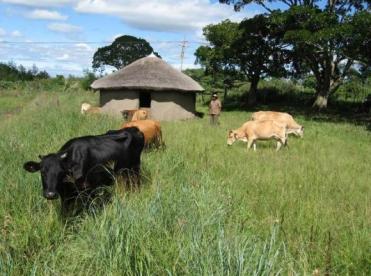South African Workshop Presentations
Two Visibility Workshops have been held on the 28 – 30 January 2010 and 2-4 March 2011 and a Partner & Training Workshop on the 15 – 22 March 2013.
2.1 Abstracts of South African Workshop (January 2010)
2.1.11 Anaerobic digestion - not just biogas production
Presenter:
George Tivchev
Farm Biogas Methane consulting CC

Anaerobic Digestion
In the absence of oxygen, anaerobic bacteria will
ferment biodegradable matter into methane and carbon dioxide, a mixture called biogas. Approximately 90% of the energy from the degraded biomass is retained in the form of methane. Biogas is formed solely through the activity of bacteria. In the environment the process occurs naturally in the bottom sediments of lakes and ponds, in swamps, peat bogs, and intestines of ruminants.

Substrates for digestion
The wastes that can be treated by Anorobig Digestion cover a wide spectrum. The older uses of the technology were for the treatment of sewage sludge and agricultural manures. More recent plants are using MSW, industrial solid wastes and industrial wastewaters. The easiest way to get a definite, qualitatively and quantitatively correct, answer on suitability of any organic substrate is the BMP (Biological Methane Potential) test.
Treatment benefits:
- Natural waste treatment process.
- Requires less land than aerobic composting or landfilling.
- Reduces disposed waste volume to be landfilled
Energy benefits
- Net energy producing process
- Generate high quality renewable fuel
- Biogas proven in many applications
Environmental benefits
- Significantly reduces carbon dioxide and methane emissions
- Eliminates odors
- Produces a sanitized compost and nutrient-rich fertilizer
- Maximizes recycling benefits
Biogas can be used in all applications designed for natural gas.It is commonly burned in internal combustion engines to generate electricity. Practical experience with small-scale engines with a rated capacity of less than 200-kW indicate electrical conversion efficiency up to 25 percent. Larger engines (up to 1.5-MW) have much higher electrical conversion efficiency, 30-35 percent. When biogas is used to produce electricity, there is the added potential for heating water from the engine’s exhaust and cooling systems. Combining hot water recovery with electricity generation can provide an overall conversion efficiency of 65-85 percent. A promising application generation is the use of gas turbines in CHP configuration. Biogas is also burned directly in space heaters or in boilers to produce hot water and steam for other industrial uses. The residues after the digestion process provide two useful products: a solid material that can easily used as a compostand a liquid fraction that contains valuable nutrients.

The value of the solid material is as a compost that
can be used on farm land or on gardens and flower beds to provide bulky organic matter to improve soil quality and fertility. The liquid fraction contains about two thirds of the nutrients in the wastes and can be used as a fertiliser sprayed on to crops.
